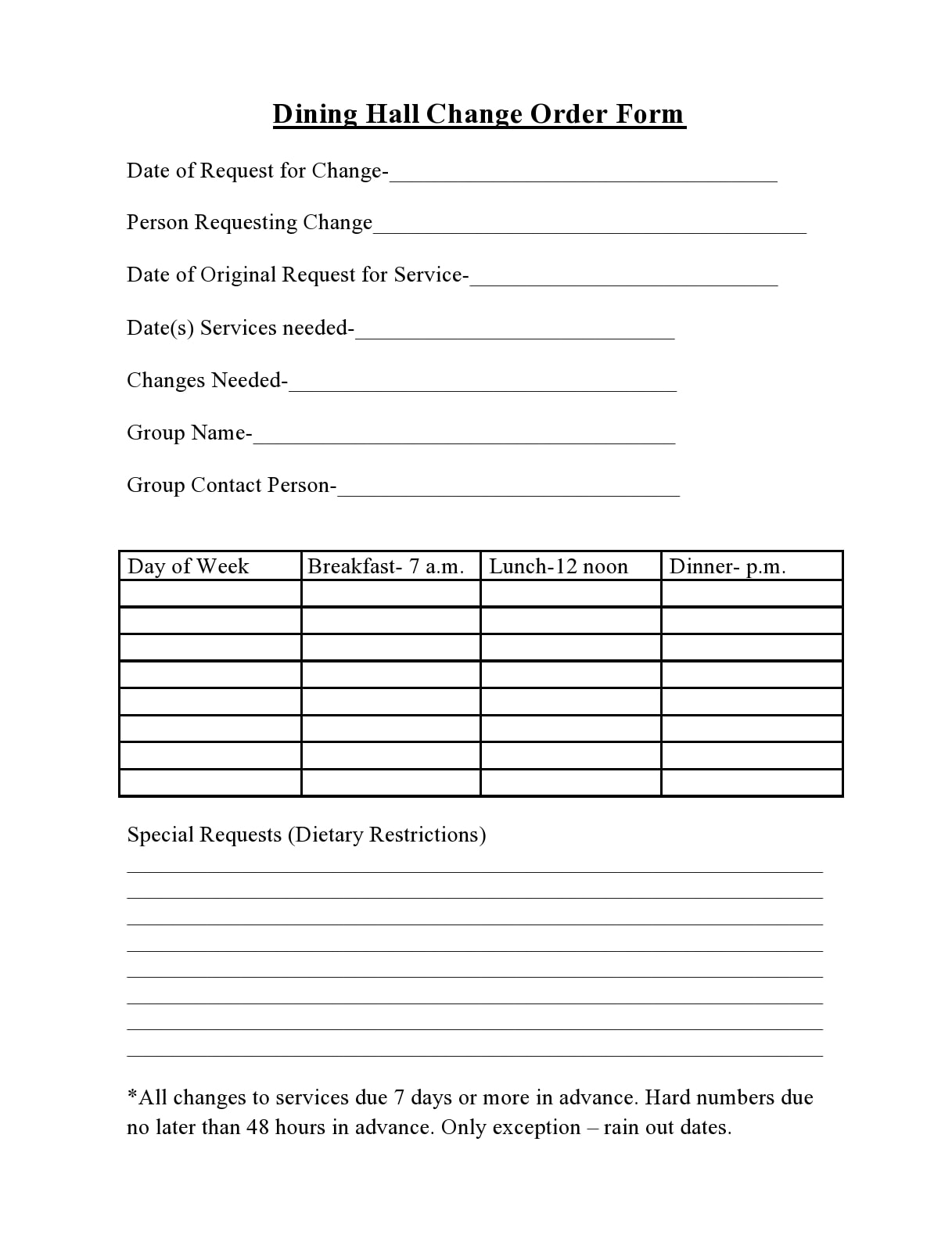
A change order is a document that acts as an extension of a contract, ensuring that all parties involved understand their new duties and expectations. It serves as a written agreement that outlines any modifications or alterations to the original contract.
This document is crucial in maintaining transparency and avoiding misunderstandings between the parties.
Why is a Change Order Necessary?
When working on a project, changes are inevitable. These changes may include adjustments to the scope of work, deadlines, or even the budget. Without a proper change order, these modifications may lead to disputes and conflicts between the parties involved. A change order provides a formal and documented way of addressing and implementing these changes, ensuring that all parties are on the same page.
The main reasons why a change order is necessary are:
- Clarity: A change order clearly defines the modifications being made and the impact they may have on the project. It eliminates any confusion or ambiguity that may arise from verbal discussions or informal agreements.
- Legal Protection: A change order protects the interests of all parties by ensuring that any new obligations, responsibilities, or liabilities are clearly stated and agreed upon.
- Record-Keeping: A change order provides a written record of all the changes made during a project. This record can be referred to in case of any disputes or disagreements in the future.
- Financial Management: A change order helps in managing the project’s budget by documenting any changes in costs or expenses. It ensures that all parties are aware of the financial implications of the modifications.
How to Create a Change Order
Creating a change order involves several steps to ensure that all the necessary information is included and that it accurately reflects the changes being made.
Here is a step-by-step guide on how to create a change order:
1. Identify the Changes:
The first step is to identify and document the changes that need to be made. This includes specifying the modifications to the scope of work, timeline, budget, or any other relevant aspect of the project.
2. Document the Impact:
Next, it is important to document the impact of these changes. This includes identifying any potential risks, delays, or additional costs that may arise as a result of the modifications.
3. Consult with the Parties Involved:
Before finalizing the change order, it is crucial to consult with all the parties involved, including the client, contractors, and any other stakeholders. This ensures that everyone is aware of the changes and agrees to them.
4. Draft the Change Order:
Using a template or a pre-designed form, draft the change order document. Include all the necessary details such as the project name, date, parties involved, a description of the changes, and any additional terms and conditions.
5. Review and Approve:
Review the change order document carefully to ensure accuracy and completeness. Make any necessary revisions and obtain the required approvals from all parties involved.
6. Sign and Distribute:
Once the change order is finalized, sign the document along with all the parties involved. Distribute copies of the signed change order to each party for their records.
Examples of a Change Order
Here are some examples of a change order:












































Tips for Successful Change Orders
Creating a successful change order involves careful planning and consideration. Here are some tips to ensure the effectiveness of your change order:
- Be Specific: Clearly describe the changes being made and their impact on the project. Avoid vague or ambiguous language.
- Include Relevant Details: Provide all the necessary information such as project name, dates, parties involved, and any additional terms and conditions.
- Obtain Written Approvals: Ensure that all parties involved sign and approve the change order document to indicate their agreement.
- Keep Records: Maintain a record of all change orders for future reference. This can help in resolving any disputes or clarifications that may arise.
- Communicate Effectively: Keep all parties informed about the changes and their implications. Foster open and transparent communication throughout the project.
- Update Project Documentation: Make sure to update all project documentation, including schedules, budgets, and contracts, to reflect the changes made.
Conclusion
A change order is a crucial document in any project, as it acts as an extension of the contract and ensures that all parties understand their new duties and expectations.
By following the steps outlined above and incorporating the tips for success, you can effectively create and implement change orders, maintaining clarity and transparency throughout the project.
Change Order Template Word – Download